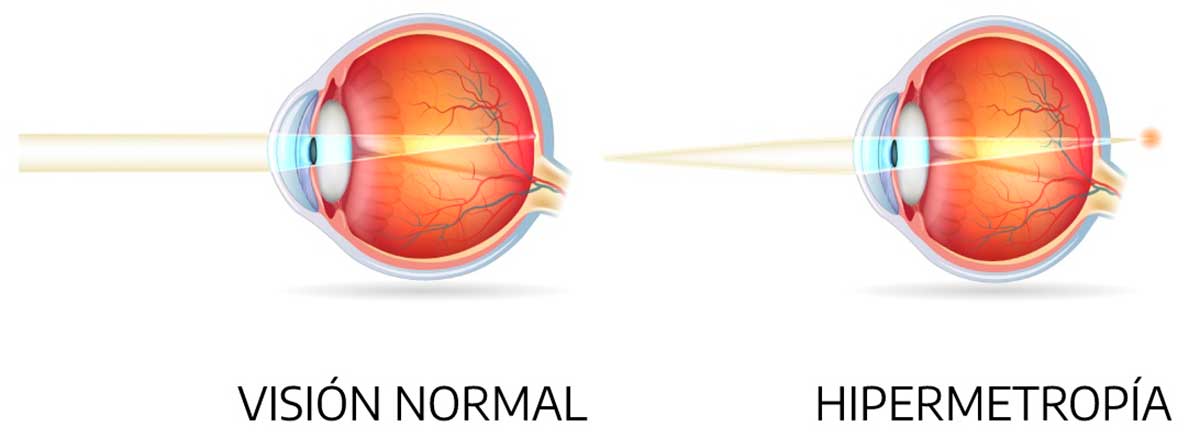
Farsightedness is a refractive error that causes blurred vision of objects at close range.
People with this condition often have difficulty reading and seeing the phone or tablet properly.
As a curious fact, all people are farsighted at birth, but this condition is corrected as the eyeball develops.
Farsightedness cannot be prevented and it is important to detect it early in order to correct it correctly.
En Área Oftalmológica Avanzada We explain what farsightedness is and how it is measured.
What is hyperopia?
La farsightedness It is a refractive error that manifests itself through blurred vision to see objects up close.
Blur occurs because images focus behind the retina and not about this one.
People with farsightedness have difficulty reading, using a mobile phone or tablet. However, as the prescription increases, they may also have difficulty seeing far away.
The children with farsightedness may not have any symptoms, as they compensate for the lack of visual acuity through accommodation.
Also, people with 40 years or older can confuse farsightedness with presbyopia, but they are different.
Farsightedness can occur because the eye is much shorter than normal or because the power of the cornea or crystalline It is less powerful than usual.
How is farsightedness measured?
Currently, there are different tests that allow diagnosing refractive errors in a first visit to the ophthalmologist.
To measure farsightedness, it is necessary to study the ocular structure by performing the following diagnostic tests:
- measurement of the eye strain.
- Graduation of sight and visual acuity.
- Study of the anterior and posterior structure of the eye.
- Detailed study that may include biometrics To be, corneal topography, corneal pachymetry y aberrometry.
When is the hypermetropia test recommended?
As we mentioned earlier, all human beings are born with a degree of farsightedness.
However, as the eyeball develops, the refractive error corrects itself.
When hyperopia does not disappear with development, it can affect the person from the first years of life. Therefore, it is important that parents are very aware of the visual health of their children.
Any child or adult present blurred vision at close range, visual fatigue, poor school performance, headache o convergent strabismus it must be examined to rule out this condition.
How is farsightedness corrected?
Like other refractive errors, it can corrected through the use of glasses or contact lenses.
When a person wants to do without the use of glasses, they can opt for a operation to correct farsightedness.
The types of refractive surgery To correct this condition are:
- Lasik surgery: consists of modifying the corneal structure through the application of excimer laser.
- FemtoLasik Surgery: it is a surgery lasik but the corneal cut or flap is done with a femtosecond laser.
- Implant of phakic lenses: It consists of implanting an intraocular lens without removing the lens.
Who is affected by farsightedness?
This refractive error affects 70% of newborn boys and, fortunately, it corrects itself over time.
In some cases, congenital farsightedness can last into adolescence.
Do you want to know more about farsightedness or do you think you may be suffering from it? get in touch with Área Oftalmológica Avanzada and our team of professionals will assist you.




